January 2017 Gold Market Charts
This post features the latest versions of a selection of gold market charts created by the GOLD CHARTS R US website that have been chosen so as to capture gold demand, supply and physical movement data across some of the world’s major gold markets. These include charts of Shanghai Gold Exchange physical gold withdrawals, Swiss gold export and import statistics, and Russian gold reserve changes.
For BullionStar’s gold and silver price charts, go to BullionStar Charts where, for example, you can measure a wide variety of financial assets in terms of gold and other precious metals.
Shanghai Gold Exchange (SGE) – Gold Withdrawals
Physical gold withdrawals from China’s Shanghai Gold Exchange (SGE) totalled 196.37 tonnes during December 2016. This was the 3rd largest monthly gold withdrawal from the SGE in 2016, only surpassed by the months of November and January. December’s withdrawals brought total SGE gold withdrawals to 1,970 tonnes for the year of 2016, which was 24% less than the record withdrawal total of 2,596 tonnes during 2015, but approximately similar to 2014’s SGE gold withdrawals of 2,102 tonnes.
For the 9 years from 2008 to 2016 inclusive, total cumulative gold withdrawals from the SGE have now reached a staggering 13,028 tonnes.
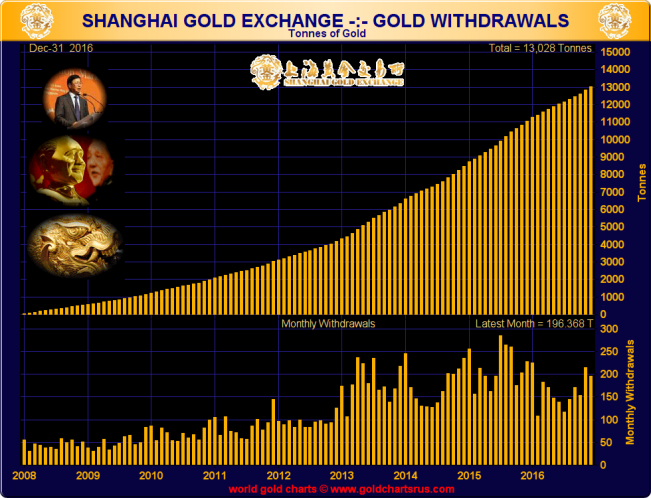
Chinese and Indian Gold Demand
The inputs into the GoldchartsRUs CHINDIA chart have been extended since last month and now include 3 components, namely Chinese SGE gold withdrawals, Indian gold imports, and a new input category for China of the People’s Bank of China (central bank) gold holdings.
One of the aims of this chart is to track the movement of gold from West to East. Since the PBoC has been surreptitiously accumulating gold reserves since the early 2000s via gold imports that do not get reflected in SGE gold withdrawals, this PBoC component can be added to the chart data without leading to double-counting. The calculation methodology for Indian imports has also been revised slightly to now use Indian net gold imports.
Since the PBoC currently holds 1,821 tonnes of gold, the cumulative overall total gold tonnage for these 3 components is now 20,938 tonnes as of the end of November 2016.
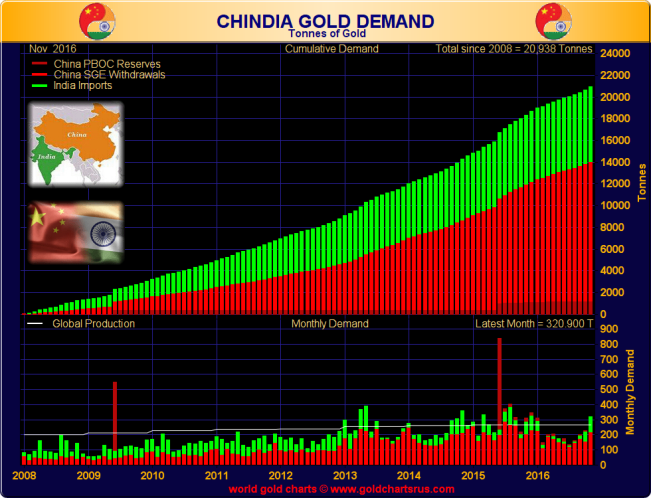
Russian Gold Reserves
The Bank of Russia did not add any gold to its official gold reserves during December 2016, bucking a trend where it had purchased gold in all other months of the year.
Russian gold reserves had risen by 199.6 tonnes during the 11 months to November 2016, and in retrospect, given that the Bank of Russia had stated in late September that its goal was to add 200 tonnes for the full year, it appears there was no appetite by the Bank to augment gold holdings during December.
As of the end of December 2016, Russian official gold reserves, as reported by the Bank of Russia, now stand at 1,614 tonnes, and are the world’s 6th largest in a ranking of central bank holders (excluding the IMF).
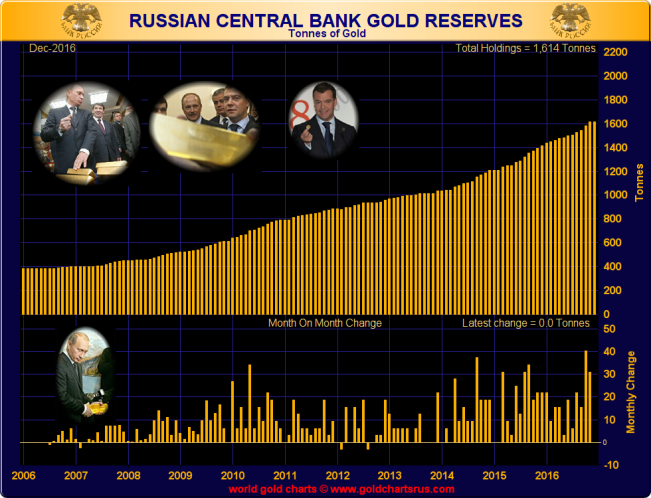
Transparent Gold Holdings – ETFs and Others
From late December 2016 through to January 2017, gold holdings of funds and vehicles which publicly reveal their gold holdings remained mostly static. Over the 5 week period from 23rd December to 27th January, the cumulative holdings of the funds tracked in the below chart increased marginally from 2,583.9 tonnes to 2599.8 tonnes.
There was no established overall trend in January, with small outflows from the group of gold-backed ETFs negated by similarly sized inflows. However, the overall trend hides the fact that there were noticeable gold outflows from some London-based ETFs such as the SPDR Gold Trust during January, but large inflows into other ETFs such as the German-based ETF product Xetra-Gold. All of this took place in an environment of the USD gold price rising from the 1160 region through to 1220 before falling slightly under the 1200 mark.
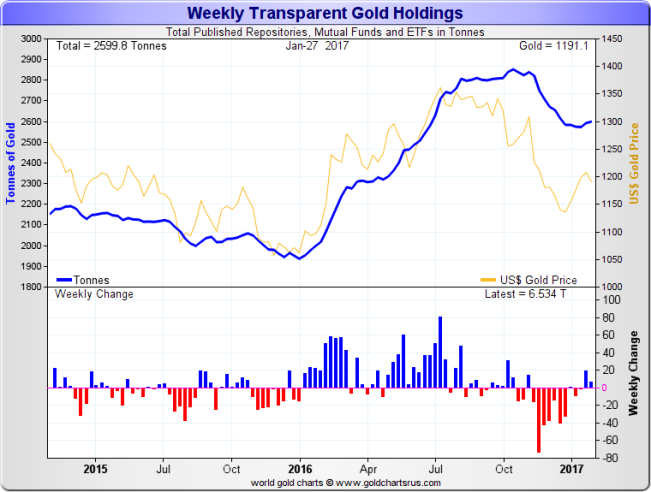
Swiss Gold Imports and Gold Exports
December 2016 was the strongest month of the year in terms of combined Swiss gold imports and exports (non-monetary gold). The Swiss economy imported a huge 270 tonnes of gold and exported 287 tonnes of gold. In fact, December’s gold imports and exports were the highest monthly totals of both gold imports and exports since May 2013.
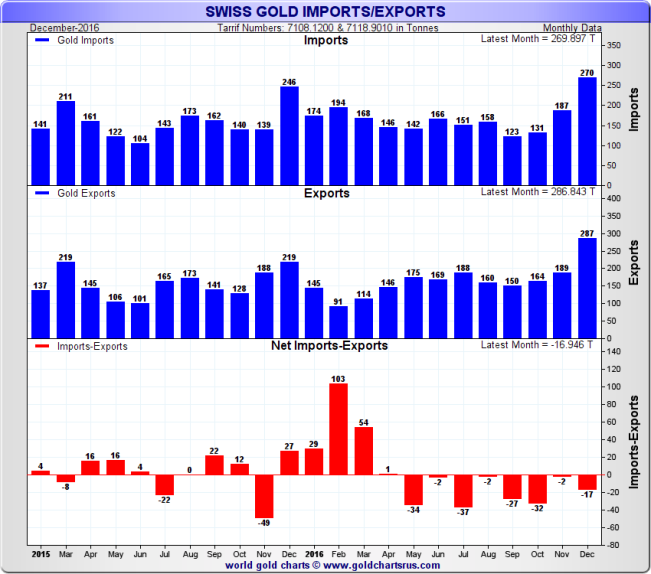
Notably, gold imports from the UK (London) dominated and were the source of supply for 151 tonnes of gold, or 56% of December’s monthly import total, into Switzerland.
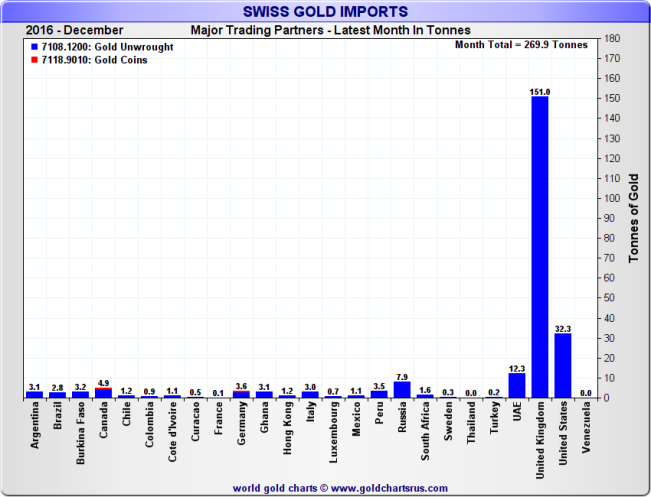
On the export side, during December Switzerland exported 154 tonnes of gold to China, 39 tonnes to Hong Kong, 23 tonnes to Singapore and 21 tonnes to India. Together these 4 Asian destinations accounted for 237 tonnes, or 82.5% of Switzerland’s December gold export total.
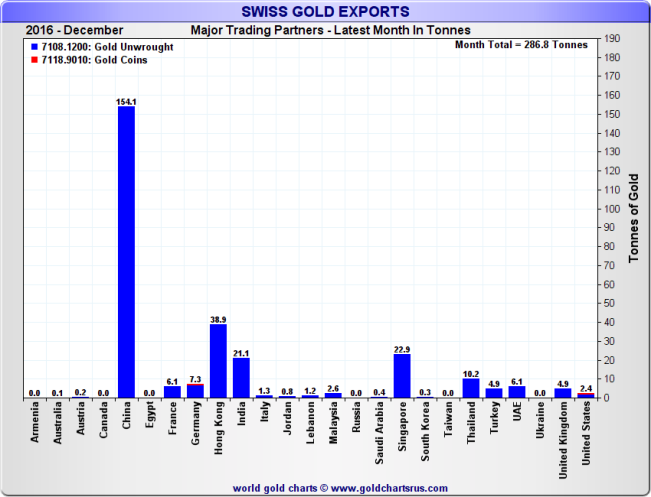
As predicted by BullionStar in December, the reversal of gold flows between the UK and Switzerland which was confirmed in November, where London re-emerged as a supplier of gold to Switzerland, has continued into December. From BullionStar’s December 2016 gold market chart commentary:
“Now that November’s data is in, it adds to the confirmation that the reversal of gold flows has indeed been established, so we should expect to see continued exports of gold from London (UK) to Switzerland in December’s Swiss data, which is released on about 23rd of January.”
At 150 tonnes, the immense size of Switzerland’s December gold import total from the UK (London) was all the more remarkable given that December is a much shorter trading month due to trading holidays and other public holidays that might have affected transport operations undertaken by security carriers and airlines.
Furthermore, with transparent gold holdings having declined during December 2016, (e.g. declined by 134 tonnes from late November to 23rd December 2016 as per last month’s commentary), it appears that the some of the gold outflows from a number of the large London stored gold-backed ETFs are being again exported out of London vaults and into Swiss gold refineries.
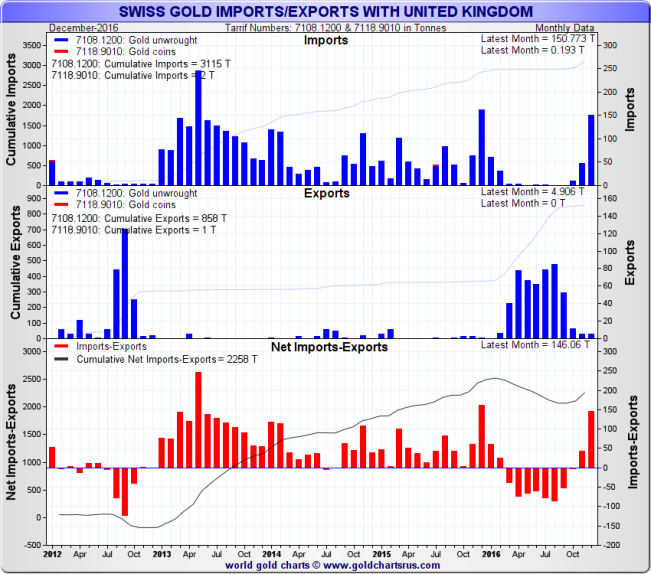
COMEX – Vaulted gold in New York approved vaults
The amount of gold held in COMEX approved vaults as of the end of December 2016 totalled 323 tonnes, of which 44.4 tonnes represented warrants against Comex contracts, and 278 tonnes was eligible to be registered (of eligible bar size and gold quality). These Registered and Eligible categories as reported by Comex were significantly higher at the end of 2016 than at any of the previous three year-ends, and were more in line with the year-end totals during the 2010-2012 period.
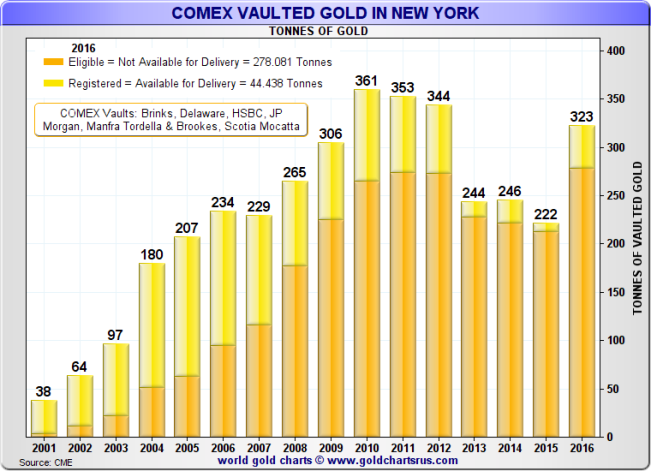
Popular Blog Posts by Gold Market Charts
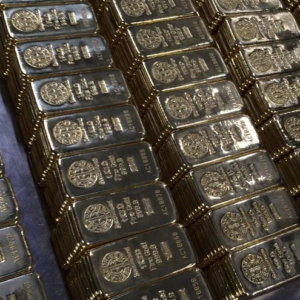 November 2018 Gold Market Charts
November 2018 Gold Market Charts
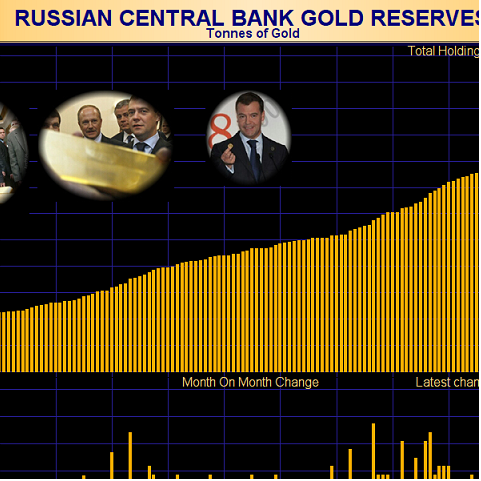 May 2018 Gold Market Charts
May 2018 Gold Market Charts
 December 2017 Gold Market Charts
December 2017 Gold Market Charts
 November 2017 Gold Market Charts
November 2017 Gold Market Charts
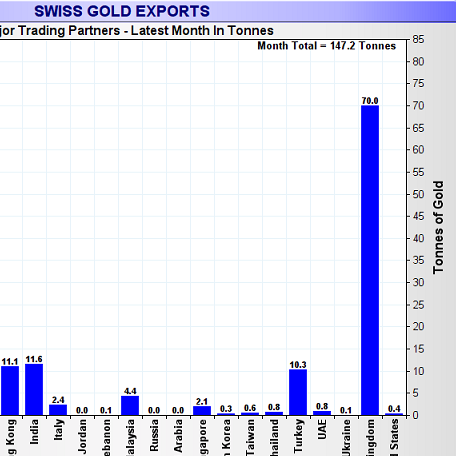 October 2017 Gold Market Charts
October 2017 Gold Market Charts
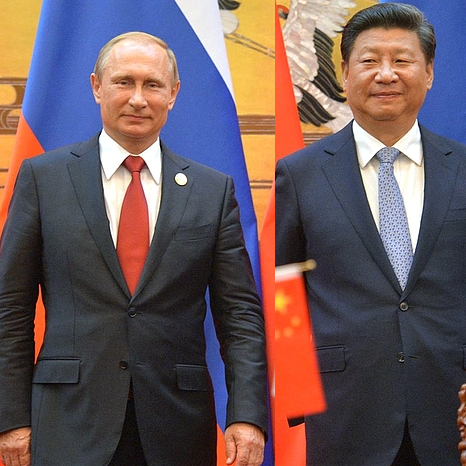 September 2017 Gold Market Charts
September 2017 Gold Market Charts
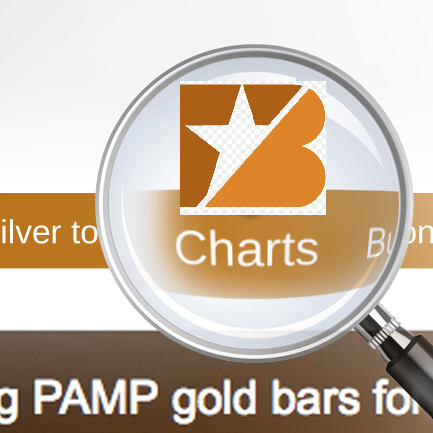 August 2017 Gold Market Charts
August 2017 Gold Market Charts
 July 2017 Gold Market Charts
July 2017 Gold Market Charts
 June 2017 Gold Market Charts
June 2017 Gold Market Charts
 May 2017 Gold Market Charts
May 2017 Gold Market Charts





 Gold Market Charts
Gold Market Charts 1 Comments
1 Comments










